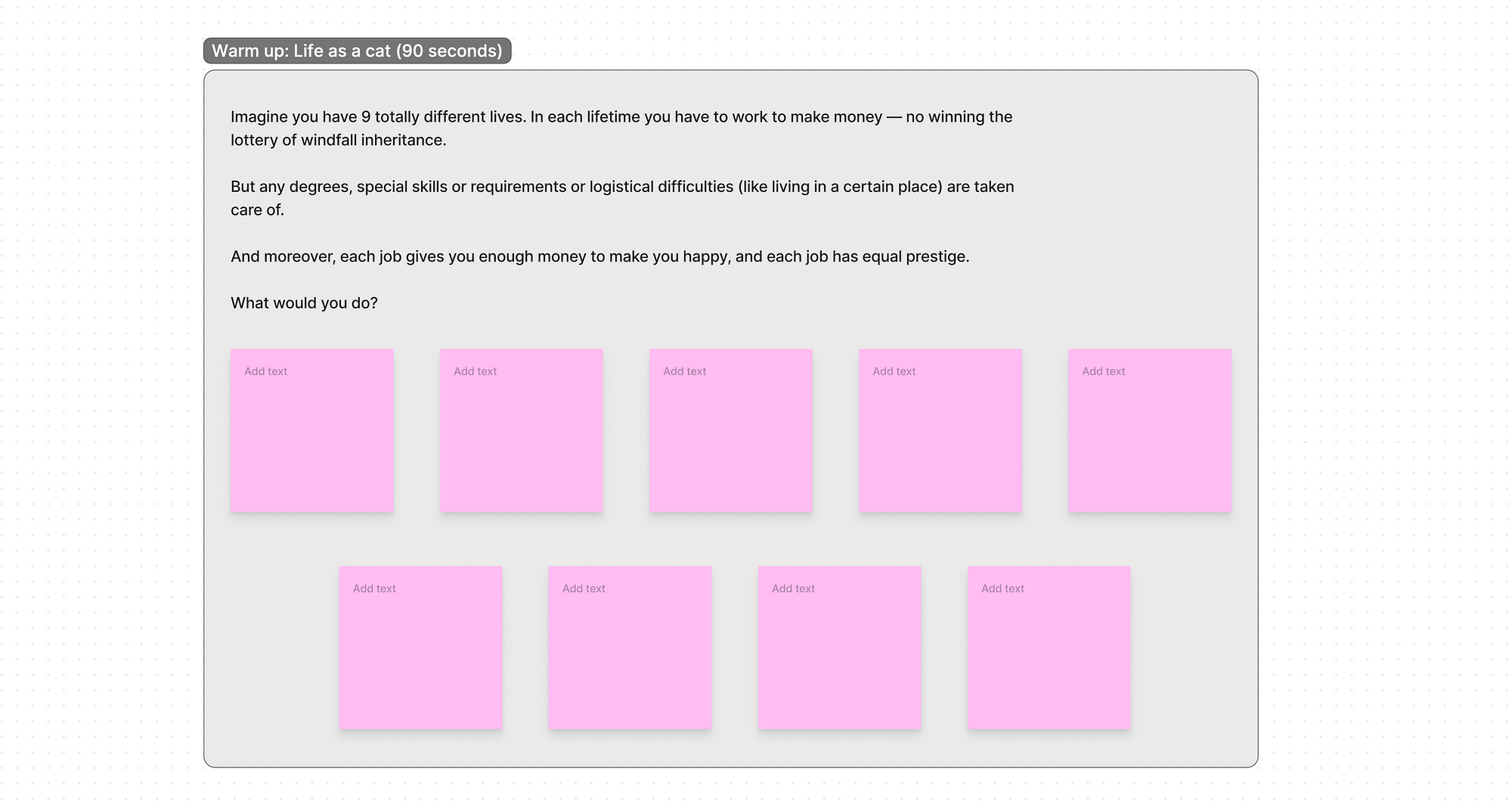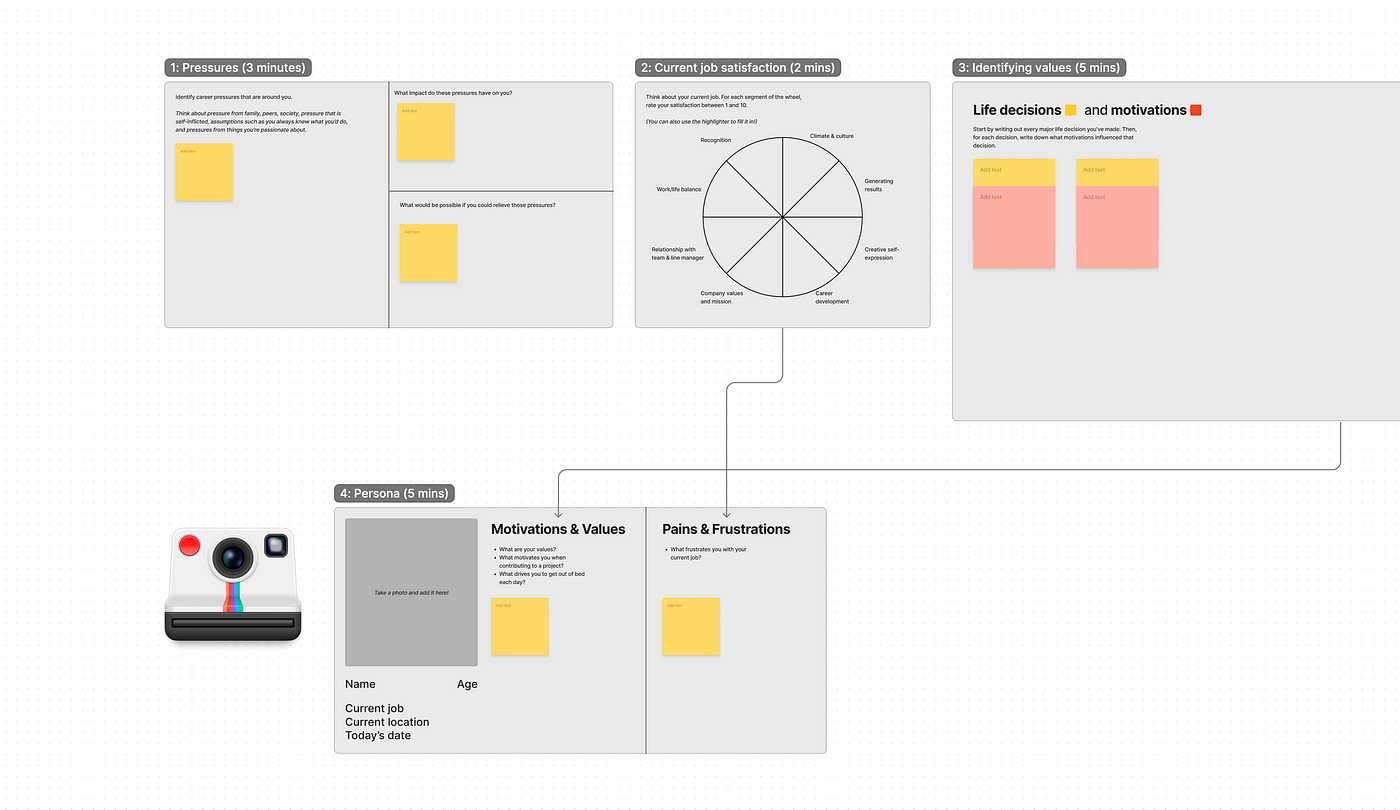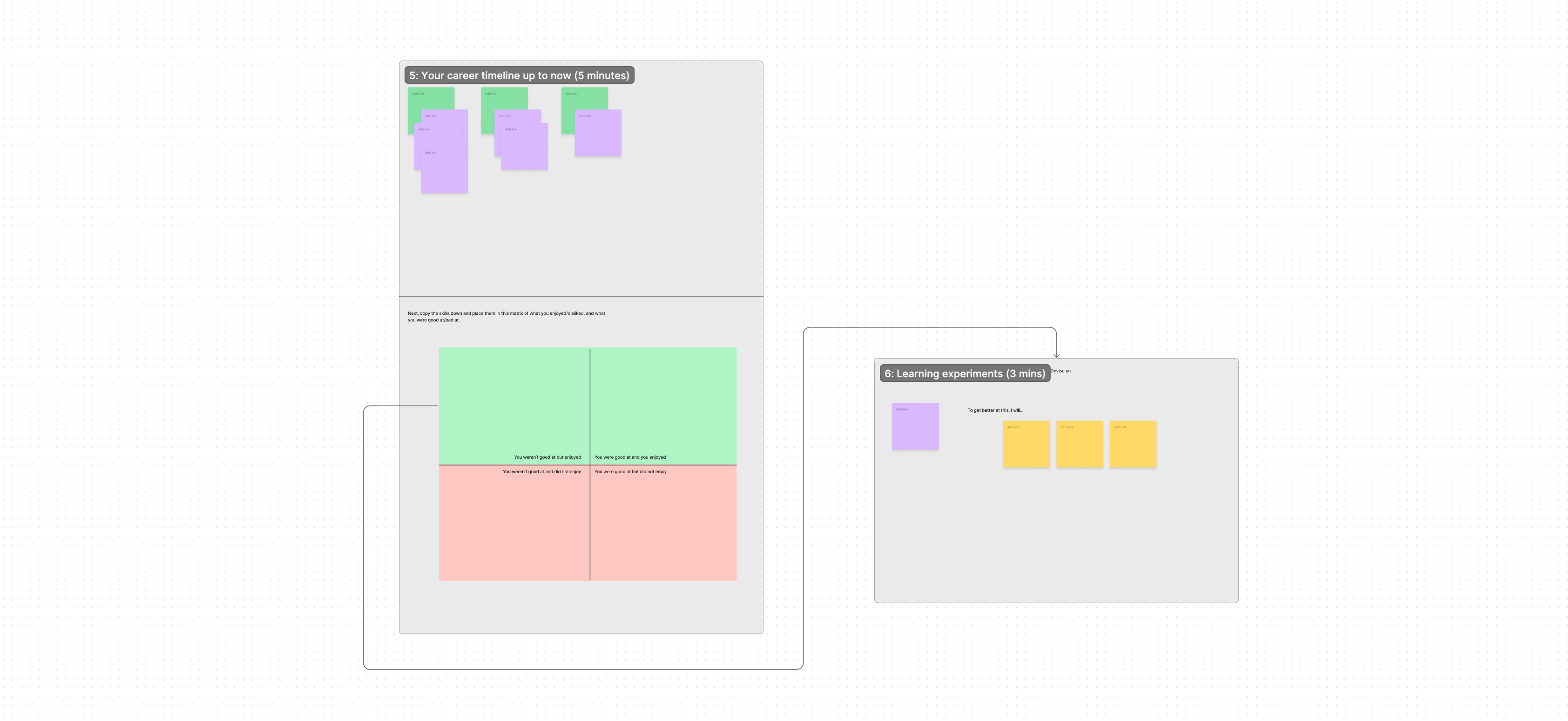Find the design career you genuinely love
Share:
Prefer videos? Watch on YouTube: https://www.youtube.com/watch?v=DR8CJb-zulA
For the last few years I’ve been working at an agency. Being a UX designer at an agency is great: you constantly move between clients and have the opportunity to work on a huge variety of products. In the last 6 months alone I’ve worked with a B2C travel company, a life sciences company and a modern art gallery. I’ve learnt loads about UX and product and tech while working here, and had the opportunity to design some really awesome products.
However, there are some parts of agency life that aren’t always great. So recently I’ve been reconsidering my career decisions and working out what it is that I truly value.
A mentor of mine at work recommended checking out this framework, which starts from the first principles of design thinking: who is your user? What are their needs, wants and goals? What are their pains and frustrations? It’s a great tool, and was actually first published in UX Collective five years ago by Catherine Most: design thinking methods for career planning.
I worked through it and found that it really helped me. Like all canvases and frameworks, it forces you to externalise all the noise in your head and just get it down on paper (or FigJam Stickies).
The framework is based on design thinking principles. You know the famous UX mantra, you are not your user? Well, this is the one time it doesn’t apply. Here, you are your user. But just because it’s you it doesn’t really mean you know yourself. But if you spend just 20 minutes working through these exercises, you’ll embark on a process of self-discovery, and have an explicit set of values and motivations that are meaningful to you.
Catherine and Lindsay originally ran this workshop over an hour at a conference, but if you’re doing it by yourself with my template, I think it will take max 25 minutes. You can get the framework for free for FigJam right here: Design Thinking Career Plan.
I’ve expanded on the framework by adding a warm up section and an extra skills-experimentation section. Let’s talk through how it all works.
Part 1: Warm up
Like all good canvases and frameworks, it helps to flex your creative muscles and get your imagination fired up. So the first part of this framework is a career planning warm up exercise. This takes just 90 seconds to complete: you have to think of 9 alternative career paths that you’d have taken in 9 alternate lifetimes.

The rules are simple: don’t worry about any special degrees or requirements needed for these alternative career paths. And don’t worry about the money or the prestige that comes with each job. Just think about what are the other paths you’d have taken.
Part 2: The persona
The next part of the framework aims towards creating a persona, using three sets of inputs.
Start by identifying the career pressures you have experienced in life. This may be pressure from family, friends, your peer group, your partners, or even from yourself. These will definitely be things you know, but by externalising them and putting labels on them you’ll become more aware of them and the impact they have on you.
Next, work out how satisfied you are with your current job. Work through each segment of the wheel and give it a score between 1 and 10 for how satisfying that facet of your work is. (You can also use the FigJam highlighter to colour in the segment of the wheel.)
When that’s done, move on to the section which examines your past life decisions. This is a biggie. List out every major life decision you think you’ve made. This may take some time — when I did this, I kept coming back to this part of the board to add more on.
Then, underneath each decision, add a few words about what motivated that decision. For example, maybe you moved city to be closer (or further) from relatives. Maybe you decided to travel around South East Asia because you relished a sense of adventure. Maybe you proposed to a partner because you felt a strong sense of love and connection with them.
From this list of motivations, you’ll notice some words that look like values. Circle these and move them over to the values section.

Now, you’ll have all the inputs you need to create your persona. Spend 5 minutes filling out these sections (and use the Selfie camera to drop in a photo of you!)
It’s useful to repeat this exercise over time, so it’s worth adding here the current date and your current job, too.
Part 3: Previous skills
The final part of this framework requires analysing all of the past careers you’ve had. If you’re a designer, make sure you include all jobs you’ve had, including any from before you were a designer.
For each of those careers, write a short list of the main skills required to perform that job effectively.
Next, drag those skills down into the 2x2 matrix, and place them in the relevant quadrant. The matrix looks at what you enjoyed and what you were good at.
Everything which you didn’t enjoy and weren’t good at can be safely disregarded — you don’t want to do any more of that unless you have to! Conversely, everything which you did enjoy and are good at should probably be the basis of future careers.
But there’s also a section of things that you enjoyed but weren’t good at. This is really interesting — all the skills in this section represent an opportunity for you to learn something new.

So, grab the top three skills from this top left quadrant and move them to the experimentation section. Then, write out a simple goal or experiment for how to get better at each skill.
For example, say I really enjoyed web analytics but didn’t think I was very good at it. An experiment to learn more about it would be to take a course or work through a book about web analytics. Or maybe there’s something even more practical I could do: perhaps implement analytics for a local communty group’s website, to get some hands-on experience.
These experiments will help you see if you want to move down that pathway and do more of that work in your future career.
After all that…
After working through all that you’ll (hopefully) have gone on a quick but productive journey of self-discovery. You’ll have comprehensive lists of:
- things that you value in your life
- things that frustrate you
- the internal & external pressures you face around your career
- a list of skills you’re good at and enjoy
- a list of skills you want to learn
- a list of experiments to kickstart that learning
and, in case we ever get the Multiverse Mapper working in real life, a list of alternative career paths that you could take.
Hopefully you found this useful! A huge thank you to Catherine Most and Lindsay Gordon who I’ve adapted this framework from. I have found it super useful and hope that it can be beneficial to many more people.
Reading this article won’t actually help you make any career planning decisions or work out what your values are — so do make sure to get the FigJam file and set aside 25 minutes to work through these exercises. Get it here.